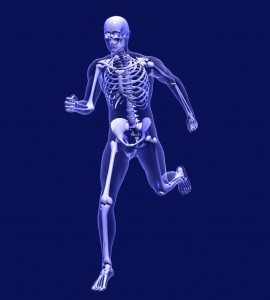Brian Schiff’s Blog
Injury Prevention, Sports Rehab & Performance Training Expert
It is that time of year where baseball pre-season throwing is ramping up. I am starting to see throwers coming in to my clinic with shoulder and elbow issues. In many cases, injury can be avoided with proper stretching and strengthening as well as effective loading programs.
Pectoralis major/minor and latissimus muscle tightness along with poor scapular control often leads to postural dysfunction and shoulder problems. Improving shoulder mobility and scapular control can reduce injury risk and shoulder strain.
The video below from one of my Functional Fit columns will demonstrate an excellent exercise that can be programmed for every thrower to aid in optimizing shoulder mobility and promoting shoulder health.
I often use this exercise following soft tissue release techniques and in conjunction with thoracic spine extension mobilization on the roller. It is an excellent warm-up and activation exercise.
The tensor fascia lata (TFL) is a problematic muscle for many clients. In many cases, it is synergistically dominant over the gluteus medius and often contributes to tightness associated with the IT band. Its actions are primarily hip flexion and abduction, and it tends to be tight in many runners and athletes I see. Performing targeted soft tissue mobilization can help resolve myofascial tightness as well as promote better activation and preferential recruitment of the gluteus medius.
Many people argue the effectiveness of foam rolling the IT band itself. While I am not inclined to ignore it altogether, I do believe that foam rolling probably has a far greater impact on the length/tension of the soft tissue beneath and associated with the IT band (e.g. glutes, quads, hamstrings and TFL). The TFL is often full of trigger points.
Below is a video I created for my Functionally Fit column for PFP Magazine. Employing some routine soft tissue mobilization will help reduce hip flexor tightness and help reset the neuromuscular system and set the stage for enhancing preferential gluteus medius activation during training exercises.
Soft tissue tightness and restriction in the latissimus dorsi is a common problem in overhead athletes, throwers, weight lifters and Crossfit participants. I often educate clientele on self myofascial release techniques using a trigger point ball or foam roller. But, I also like using a partner technique with the Stick.
Begin in standing grasping the frame of a squat rack. You may also elect to hold both handles of a TRX. Next, slowly squat down and lean back allowing the shoulders to move into flexion. Once in position, the trainer or workout partner will use the Stick to apply pressure and roll up and down along the latissimus especially working on the soft tissue near the shoulder.

Perform this technique for 30-60 seconds and then switch sides. Adjust pressure and location based on feedback from the client.
It has been a while since my last post. To be honest, I have been busy with preparing/presenting my live seminar last week and webinars, as well as fulfilling my writing obligations and clinical role. So, I have been taking a “break” from blogging and recharging the battery so to speak.
Now I am getting back to it. The great thing about presenting though is that I am consistently reading and reviewing the latest research on topics related to my presentations and closely examine my rehab and exercise philosophy. In my clinic, I treat many runners for knee pain.

The average profile is an experienced runner b/w the ages of 25 and 50 who logs 20 – 35 miles per week and routinely competes in half marathons or some sort of triathlons.
Common injuries include IT band problems versus lateral meniscus tears versus patellofemoral pain. Often, I uncover the following things related to kinetic chain deficiencies:
- Elevated or rotated inominate
- Ankle dorsiflexion restriction (OH squat assessment)
- Poor single leg stance
- Weak lateral myofascial chain
- TFL dominance
- Excessive femoral internal rotation/adduction with single leg squats
- Tightness in hip flexors, ITB and soleus
Many currently debate the efficacy of foam rolling. Is it worthwhile? Some say yes, while others say no.

